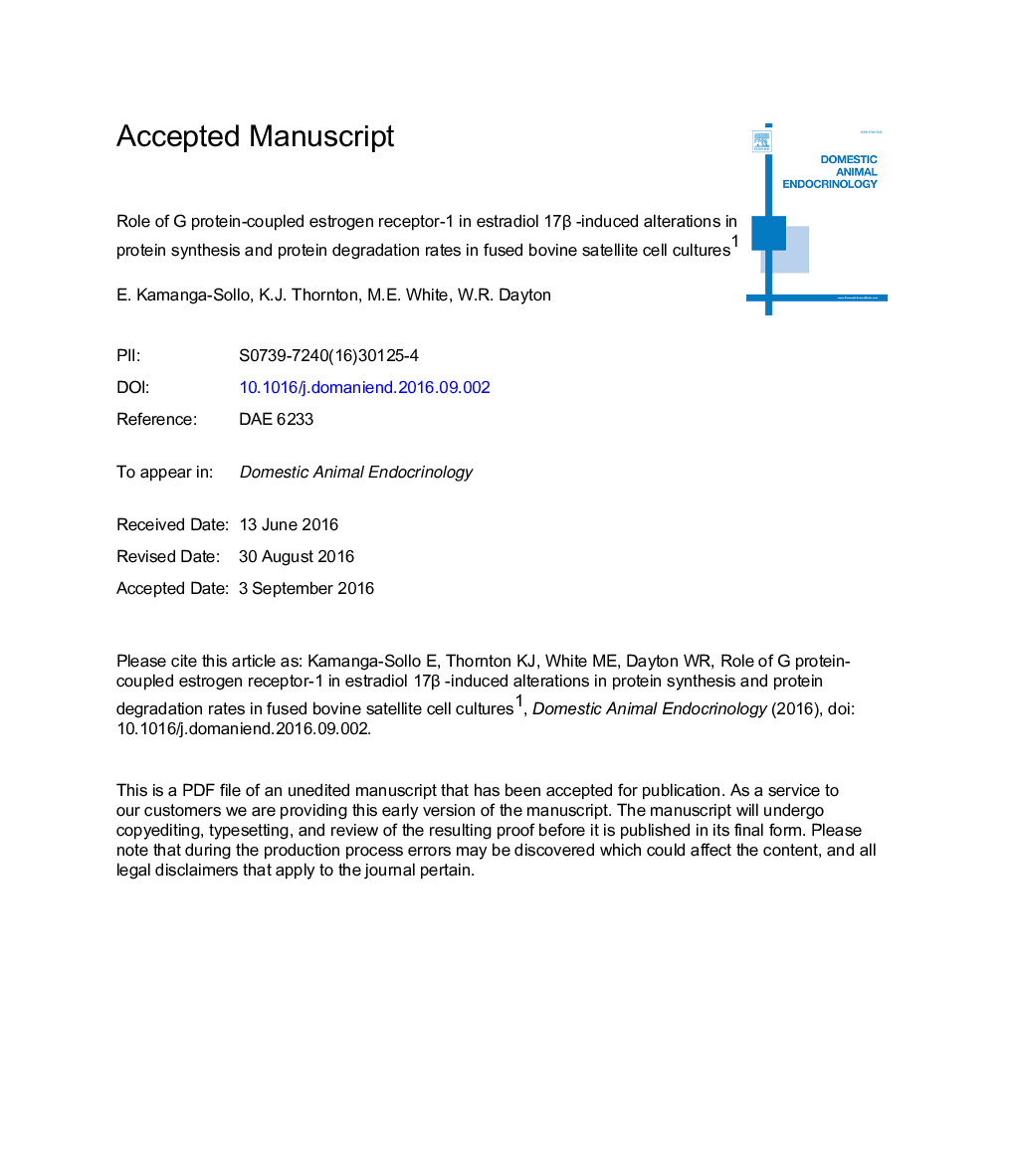| کد مقاله | کد نشریه | سال انتشار | مقاله انگلیسی | نسخه تمام متن |
|---|---|---|---|---|
| 8482003 | 1551501 | 2017 | 33 صفحه PDF | دانلود رایگان |
عنوان انگلیسی مقاله ISI
Role of G protein-coupled estrogen receptor-1 in estradiol 17β-induced alterations in protein synthesis and protein degradation rates in fused bovine satellite cell cultures
دانلود مقاله + سفارش ترجمه
دانلود مقاله ISI انگلیسی
رایگان برای ایرانیان
کلمات کلیدی
موضوعات مرتبط
علوم زیستی و بیوفناوری
علوم کشاورزی و بیولوژیک
علوم دامی و جانورشناسی
پیش نمایش صفحه اول مقاله

چکیده انگلیسی
In feedlot steers, estradiol-17β (E2) and combined E2 and trenbolone acetate (a testosterone analog) implants enhance rate and efficiency of muscle growth; and, consequently, these compounds are widely used as growth promoters in several countries. Treatment with E2 stimulates protein synthesis rate and suppresses protein degradation rate in fused bovine satellite cell (BSC) cultures; however, the mechanisms involved in these effects are not known with certainty. Although the genomic effects of E2 mediated through the classical estrogen receptors have been characterized, recent studies indicate that binding of E2 to the G protein-coupled estrogen receptor (GPER)-1 mediates nongenomic effects of E2 on cellular function. Our current data show that inhibition of GPER-1, matrix metalloproteinases 2 and 9 (MMP2/9), or heparin binding epidermal growth factor-like growth factor (hbEGF) suppresses E2 stimulate protein synthesis rate in cultured BSCs (P < 0.001) suggesting that all of these are required in order for E2 to stimulate protein synthesis in these cultures. In contrast, inhibition of GPER-1, MMP2/9, or hbEGF has no effect on the ability of E2 to suppress protein degradation rates in fused BSC cultures indicating that these factors are not required in order for E2 to suppress protein degradation rate in these cells. Furthermore, treatment of fused BSC cultures with E2 increased (P < 0.05) pAKT levels indicating that the pAKT pathway may play a role in E2-stimulated effects on cultured BSC. In summary, our current data show that active GPER-1, MMP2/9, and hbEGF are necessary for E2-stimulated protein synthesis but not for E2-simulated suppression of protein degradation in cultured BSC. In addition, E2 treatment increases pAKT levels in cultured BSC.
ناشر
Database: Elsevier - ScienceDirect (ساینس دایرکت)
Journal: Domestic Animal Endocrinology - Volume 58, January 2017, Pages 90-96
Journal: Domestic Animal Endocrinology - Volume 58, January 2017, Pages 90-96
نویسندگان
E. Kamanga-Sollo, K.J. Thornton, M.E. White, W.R. Dayton,